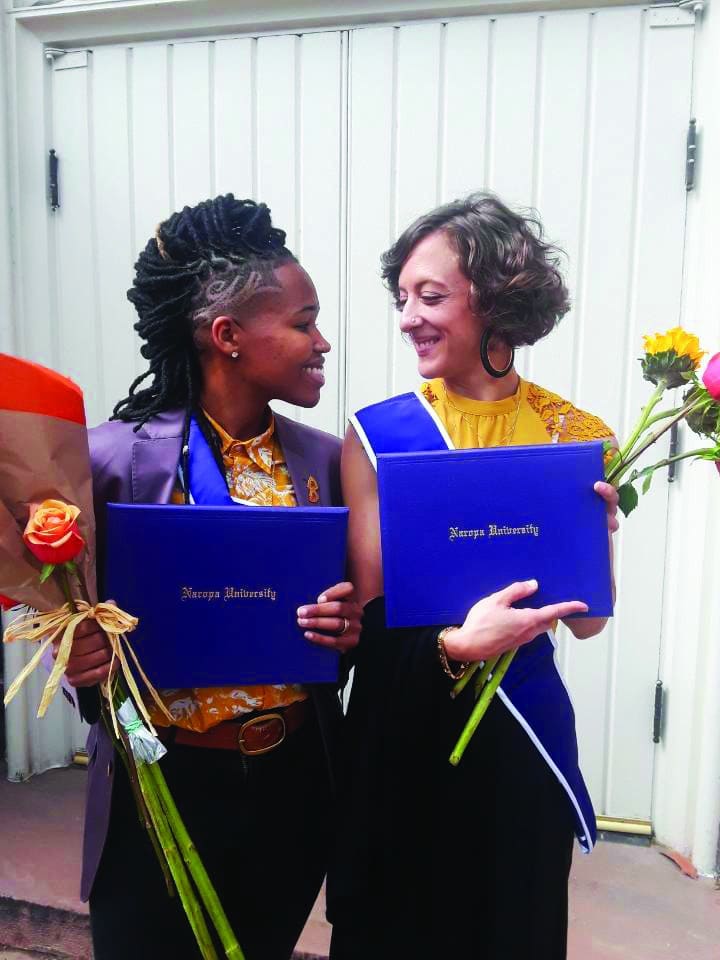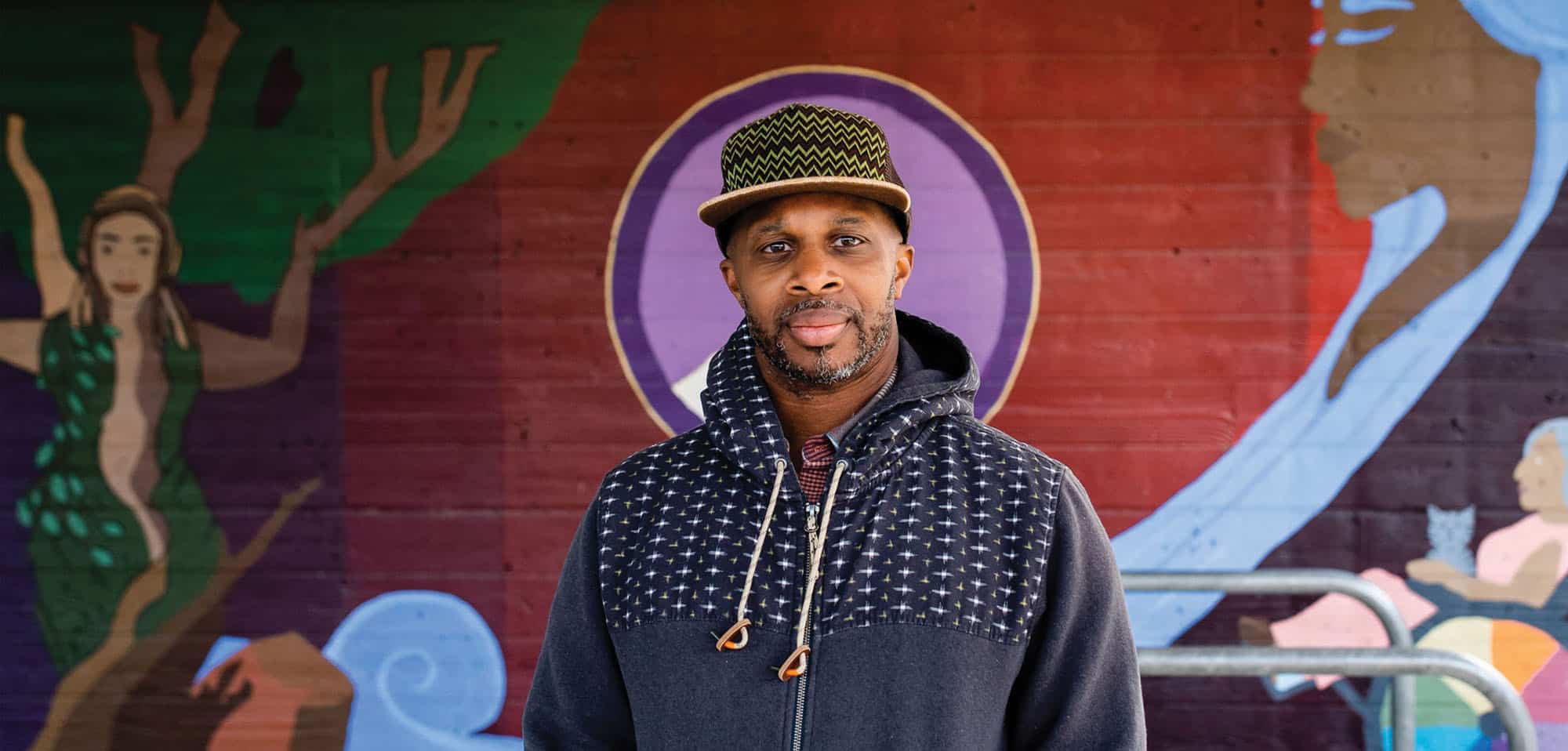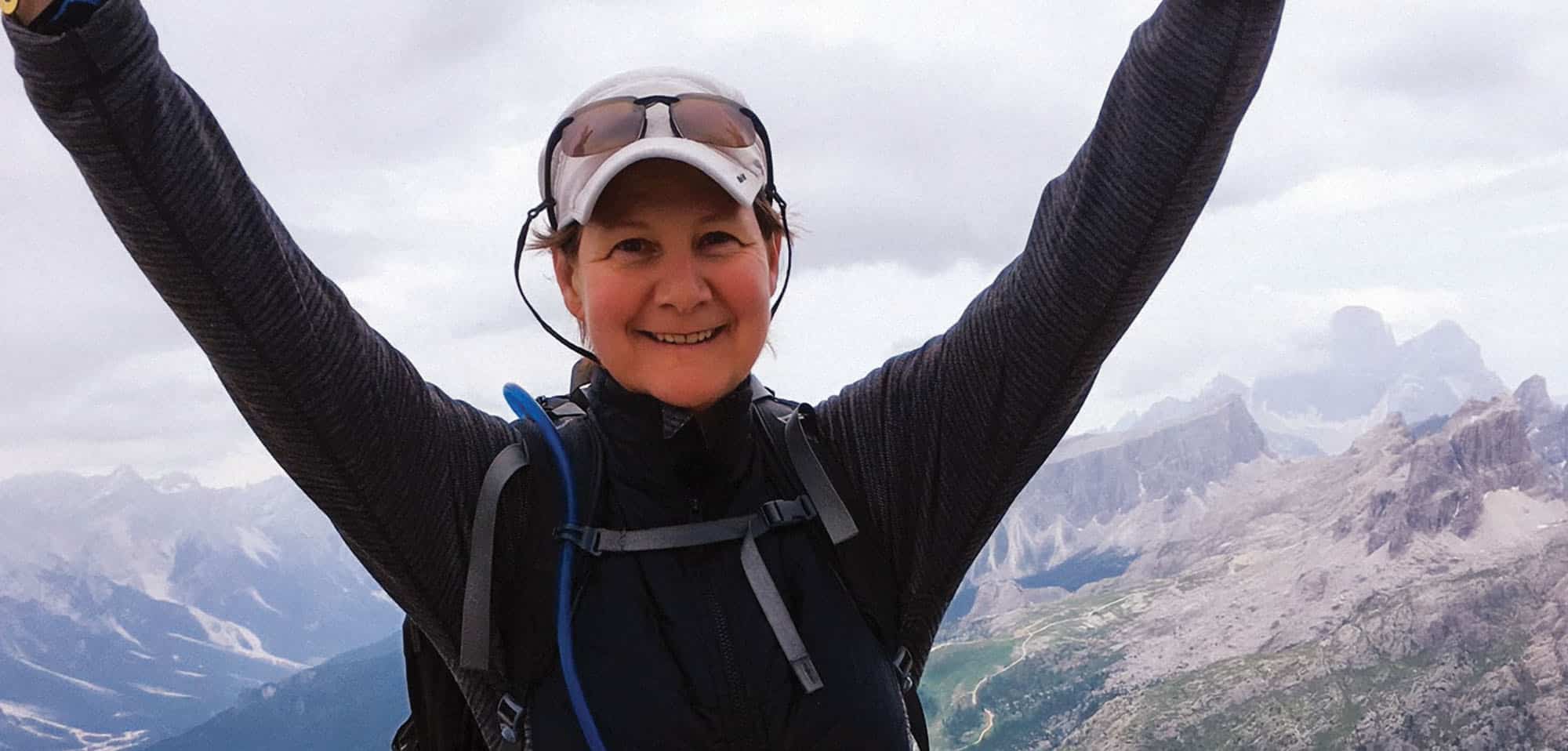Alumnx power couple using awkwardness to disrupt
 Many of us consider awkwardness as something we try to avoid. For Tosha Jorden (BA ’15, MA ’19) and Christina Shore (’19), both alumnx of Naropa’s MA in Clinical Mental Health Counseling: Somatic Counseling program, awkwardness has become a crucial component of their everyday lives. Together, they have built a love, and life, that is both unique and empowering to the work they do in normalizing what it means to embrace the uncomfortable.
Many of us consider awkwardness as something we try to avoid. For Tosha Jorden (BA ’15, MA ’19) and Christina Shore (’19), both alumnx of Naropa’s MA in Clinical Mental Health Counseling: Somatic Counseling program, awkwardness has become a crucial component of their everyday lives. Together, they have built a love, and life, that is both unique and empowering to the work they do in normalizing what it means to embrace the uncomfortable.
“We were about September deep into our first year of a cohort together, and we were crushing on each other pretty good,” Shore reminisces. “So, we decided to go for a walk. We hadn’t clarified that the other person also had a crush, so it was a very awkward walk, and I had some almonds in my purse. I offered Tosha some almonds, and Tosha proceeded to take the almond and was just being awkward and flirting in a kind of an unusual way with the almond. So, we always joked about the awkward almond. And that was Tosha—always embracing the awkward.”
That awkward walk was the beginning of their love for one another, and the moment they planted a seed that they would revisit years later. Meanwhile, other seeds of purpose and mission were blooming within both of them.
During their studies within the bubble, the couple faced challenges in navigating their paths, both individually and as partners.
 Engaging in conversations around diversity and inclusivity while attending a predominantly white university in a predominantly white town is definitely a space for discomfort. As of 2019, Boulder was 79.6 percent White (non-Hispanic) and 1.11 percent Black or African American (non-Hispanic). According to Naropa’s Fall 2021 census, the total student body was comprised of 73 percent White (non-Hispanic), 22 percent Students of Color, and 5 percent Unknown.
Engaging in conversations around diversity and inclusivity while attending a predominantly white university in a predominantly white town is definitely a space for discomfort. As of 2019, Boulder was 79.6 percent White (non-Hispanic) and 1.11 percent Black or African American (non-Hispanic). According to Naropa’s Fall 2021 census, the total student body was comprised of 73 percent White (non-Hispanic), 22 percent Students of Color, and 5 percent Unknown.
Over time, this lack of diversity began to weigh on them and played a role in their eventual decision to move to Evanston, Illinois, after graduation, Shore’s hometown.
For Jorden, the discomfort was even more significant because they completed their bachelor’s and master’s degrees at Naropa. “Boulder being very white, it felt like my nervous system was feeling fried. And being there for undergraduate and graduate, that added up, and I needed to go do work with people who look like me, and maybe who had some similar experience,” Jorden says. “So I felt like that was the push for me to go out into the world and be a therapist with folx who have similar identities to me. I work with youth and families right now in Evanston, and it gives me an opportunity to practice mindfulness with youth in a container that is social justice-oriented.”
Shore explains there was a lot of dialog at Naropa in terms of how to translate their education into the real world, but feels Naropa’s training “really holds up.” She says, “All the buzzwords like diversity, inclusivity—there’s so much that doesn’t back it up. I think we’ve learned how to actually show up interpersonally and do that work.”
“I use it a lot with my clients—and it’s so beautiful and powerful, just to be like, that’s oppression; this is what’s happening around you. People don’t get that named for them. Very often, it can just reframe and shift the perspective. It’s so potent, and I don’t think a lot of therapists necessarily use it actively in therapy. This is where I want to be focusing my attention.”
I think because I have multiple marginalized identities, my existence has felt awkward. And then I just learned I have to just be who I am.
While supporting their clients to name what oppression feels like, the two have also come to take a stance against bullying, a word they believe to be more approachable in deconstructing power dynamics.
“When I’m being oppressed, it feels like I’m being bullied,” Jorden explains. “They have a similar ring, but I think the word ‘bullying’ is more accessible than people saying, ‘Oh, you’re being oppressive.’ It seems people are more receptive to feedback that they are being bullies rather than being racist or oppressive.”
 But how do we stop bullying? These two believe we interrupt it.
But how do we stop bullying? These two believe we interrupt it.
A classically trained dancer focused on being graceful, Shore (left) credits Jorden with helping her to embrace her inner awkwardness.
“You teach your kids not to bully, but beyond that, how to teach your kids to interrupt bullying, or stand up for other people being bullied, or what to do around that?” Shore says. “It feels the exact same as social justice work, and I like that it’s connected to the word ‘awkward’ because it’s often so awkward to interrupt because the whole system is based on not being awkward and following the status quo.”
Interrupting isn’t easy, and so they continue embracing the uncomfortable that goes along with disrupting systems that don’t work.
“Interrupting is often not a particularly graceful act. Sometimes it can be, but often, it’s like, how do I say this thing? Even just having conversations around bullying or around social justice stuff can be so awkward. And just to sort of normalize that and get comfortable with that. It can help the process,” Shore says.
Remember the almond that started this whole love story? Now it’s a clothing line, Awkwrd Almnd.
“I thought to myself that every time I dress I need to embody my spirit, I need to make a statement bigger than myself,” Jorden says.
So they created Awkwrd Almnd, an independent, non-gendered clothing brand that aims to stop bullying. Their commitment to awkwardness is as prevalent as their commitment to moving social justice forward. They continue to embrace all that makes them who they are.
“I think because I have multiple marginalized identities, my existence has felt awkward. And then I just learned I have to just be who I am. I feel like I spend most of my time saying things that people don’t want to hear. Because I’m in a female body, I’m supposed to wear female clothes and have long hair, the list can go on. So from a very young age, I just had to embrace myself. And it’s still very awkward. And it’s a living, moving thing. Meditation has also helped me be more aware of it and move through it. Because I believe before I was meditating, it was just awkward and painful. But now I have the choice about how I want to move in the world with that, what I want to say with it, which has given me my own power,“ Jorden says.





